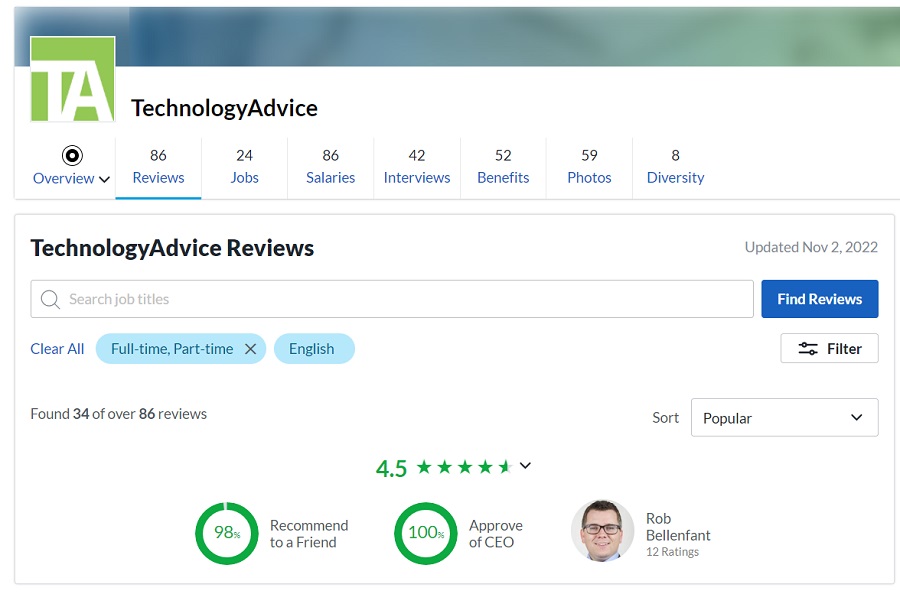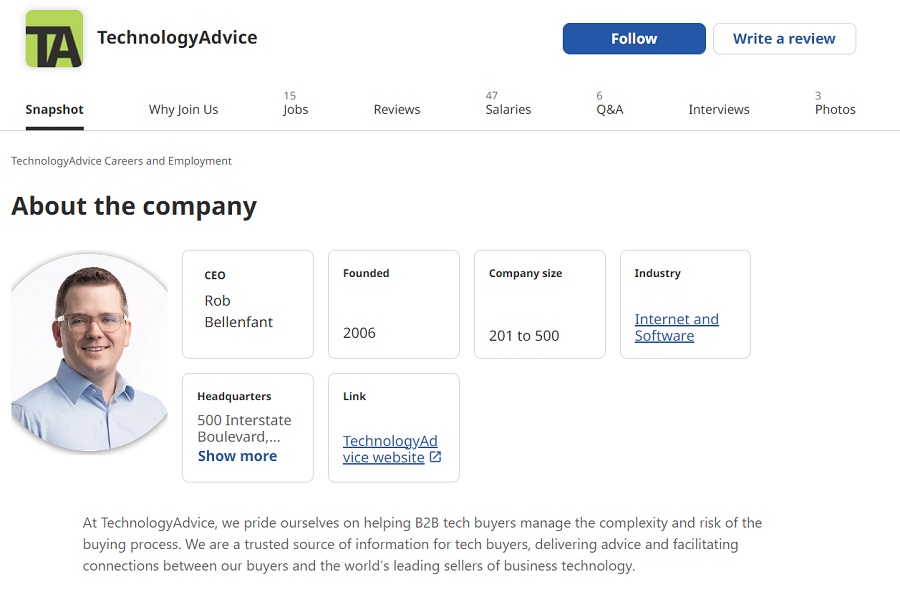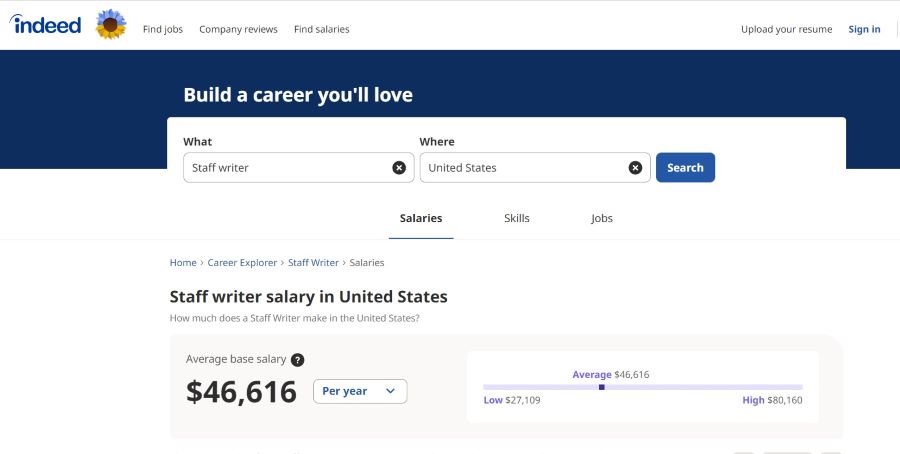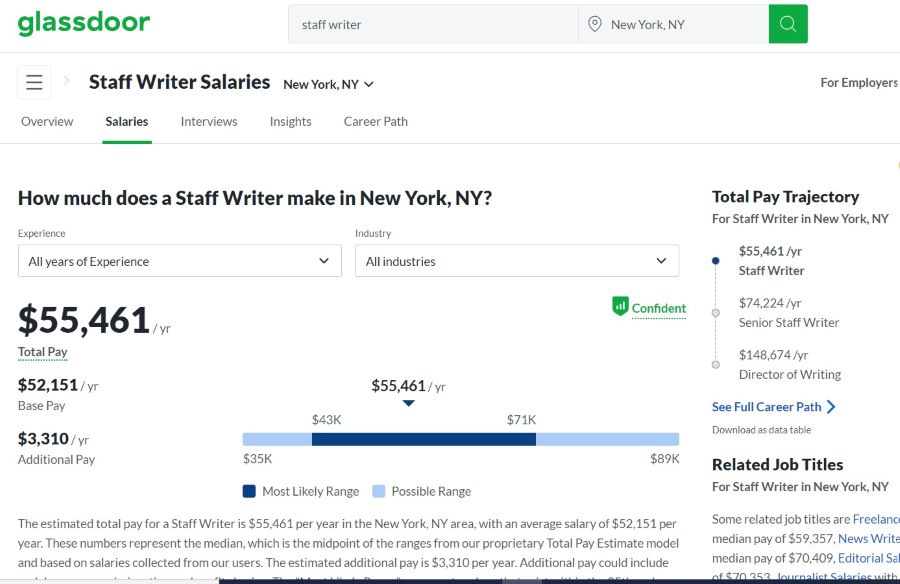Glassdoor and Indeed both aim to help businesses improve recruiting and hiring. However, their platforms serve slightly different purposes, so we compared the two to help you understand the differences and how you can best use both. Glassdoor and Indeed both offer free plans for employers. Additionally, you can upgrade to a paid plan for both Glassdoor (quoted at $15,000 annually for 21-50 jobs ads/month) and Indeed (starting at $120 per month for unlimited job postings for 30 candidates).
- Glassdoor: Best for businesses needing employer branding tools
- Indeed: Best for budget-conscious companies hiring for common positions
You may find that neither Glassdoor nor Indeed are the right fit for your small business. If you’re looking for a recruiting solution with robust job posting and applicant matching tools, then you may want to consider an alternative job board, such as ZipRecruiter, where you can boost your hiring activities through job aggregation—distributing your open jobs to more than 100 job boards with just one click.
Glassdoor vs Indeed: Side-by-Side Comparison
Your business’ goals ultimately determine whether Glassdoor or Indeed is the best fit. If you want to promote your company and workplace culture to job seekers, Glassdoor is a better option. Its branding tools are more robust—enabling employers to showcase their brand to applicants. With Indeed, you get employer branding solutions, but its platform is more focused on letting you post jobs. Compared to Glassdoor, Indeed’s strength is helping you quickly find qualified job seekers to fill vacant positions.
Features | ||
|---|---|---|
Pricing | Free tier available; custom-priced paid plans (we were quoted $15,000 annually for 21-50 jobs ads/month) | Free job postings; optional pay-per-click (PPC) for job ads advertising; Standard Subscription: $120/per month Professional subscription: $300/per month |
Job Postings | Unlimited (via Indeed)* | Unlimited** |
Sponsored Job Ads | Included in paid plans | Employer sets budget; charged per application submitted |
Resume Search | N/A | Unlimited resume searches |
Company Page | ✓ | ✓ |
Company Reviews | ✓ | ✓ |
Salary Tools | ✓ | ✓ |
*To post a job on Glassdoor, register on Indeed and create your job listing.
**All job postings on Indeed are automatically posted to Glassdoor.
Glassdoor: Ideal for Employer Branding
Glassdoor provides the perfect place to manage your employer brand, allowing you to engage job seekers by letting them know about your company and workplace culture, a necessity when you’re hiring for a niche position that’s highly sought after.
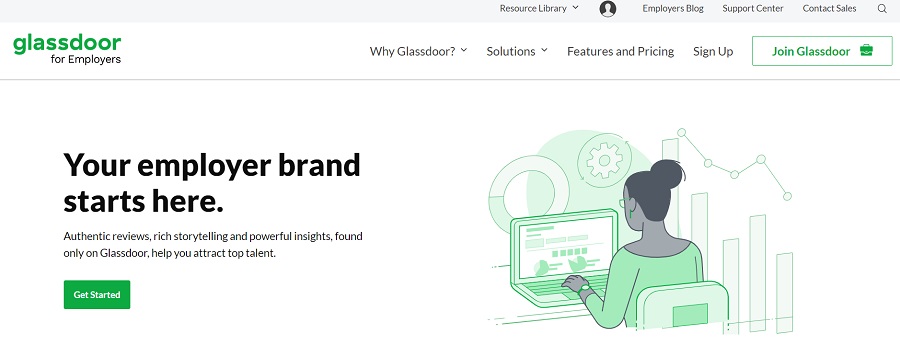
Glassdoor’s employer branding tools can help get your company’s brand in front of job seekers even when you do not have active recruitments underway.
It has a variety of solutions, from branded job postings to job ad advertising and a customizable company page. However, Glassdoor doesn’t have a way to search resumes of passive job seekers and reach out to them as Indeed does.
Read our full Glassdoor review for more details about the provider.
Pros & Cons of Glassdoor
| PROS | CONS |
|---|---|
| Free company page with reviews management | Free plan doesn’t include branded job postings and job ads advertising |
| Free salary tool | No resume search tool |
| Robust employer branding tools | Lacks an applicant tracking system (ATS) |
Indeed: Optimal for Quick & Budget-friendly Hiring
From a job seeker’s point of view, Indeed is a better place to look for a job since it makes job hunting easy. For employers wanting to get their jobs in front of potential candidates and improve the chances of their applying, this is also the best place. In addition to being a job board, Indeed aggregates jobs from other job posting sites and crossposts them.
Knowing how to maximize your Indeed job postings will set you apart from the other listings and help draw in top qualified candidates. Learn more on our guide to maximizing your free Indeed job posts.
When job seekers find a position they’re interested in, they can check out the company’s reviews on both sites. However, with Glassdoor, you can view feedback from the business’ previous and current employees. You may even get insight into what the company’s interview process is like.
Indeed lets you post unlimited jobs for free and view applicant resumes online. This is optimal for small employers with open jobs and a need to hire quickly at little cost. You can also advertise jobs by setting your own budget.
Your jobs will be seen by a large pool of applicants (it has more than 150 million job seeker resumes), and you can set filters to ensure you find a good fit. However, you are more susceptible to receiving applicants that are just mass applying to numerous jobs, so you’ll need to use Indeed’s features and establish some internal processes to increase efficiency.
Looking for a more in-depth review of Indeed and all of its features? Check out our dedicated Indeed Review.
Pros & Cons of Indeed
| PROS | CONS |
|---|---|
| Ease of use | Occasional resume parsing inaccuracies |
| Unlimited job postings | Applicant tracking tools are not robust |
| Free listings | Expensive to subscribe to all of its add-ons |
If you need help learning how to advertise your open positions, check out our guide on how to post a job ad.
Indeed vs Glassdoor: Pricing
Glassdoor and Indeed provide slightly different solutions, but they offer a similar value for your money. You can sign up for a free employer account on both Indeed and Glassdoor. The free account allows you to claim your company page and online reviews. You can also post jobs and access each platform’s salary tools for free.
Free plan | ✓ | ✓ |
Free plan inclusions | Free job posting, appear in general search results, accept mobile applications, manage candidates | Posting company info, review requests, basic employer profile analytics |
Daily pricing | Starts at $5 for sponsored jobs | None, only fixed monthly subscriptions |
Paid plan monthly pricing | $120 to $300 | Quoted at $15,000 annually for 21-50 jobs ads/month; must contact sales |
Paid plans inclusions | Unlimited job postings for 30 to 100 candidates per month; wider candidate reach through desktop, mobile, and job alerts | Paid ads, featured branded content, keyword analysis, and industry benchmark reports |
Job posts per month | Unlimited* | Unlimited via Indeed |
* If you want to advertise your open positions, you have to pay extra. Advertising ensures your job posting is seen by a larger audience, increasing the likelihood that qualified job seekers will apply.
Indeed vs Glassdoor: Features
Both Indeed and Glassdoor offer features that will help your business find top candidates and retain your current employees. Click through the tabs to learn more about some of the features offered.
Bottom Line
Indeed and Glassdoor are both great recruitment software options, each with specific strengths to improve employee branding and hiring activities. What’s important is determining your business’ talent acquisition strategies and needs to help you identify which of these two is most useful to you. Many companies utilize both of these platforms to cover all their unique employment needs and to target a variety of candidates in today’s job market.
